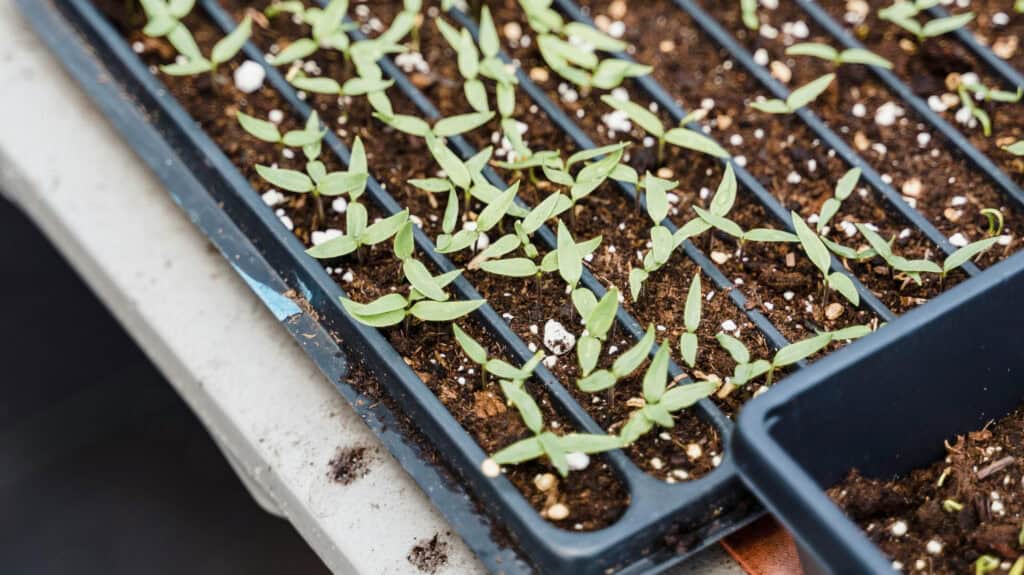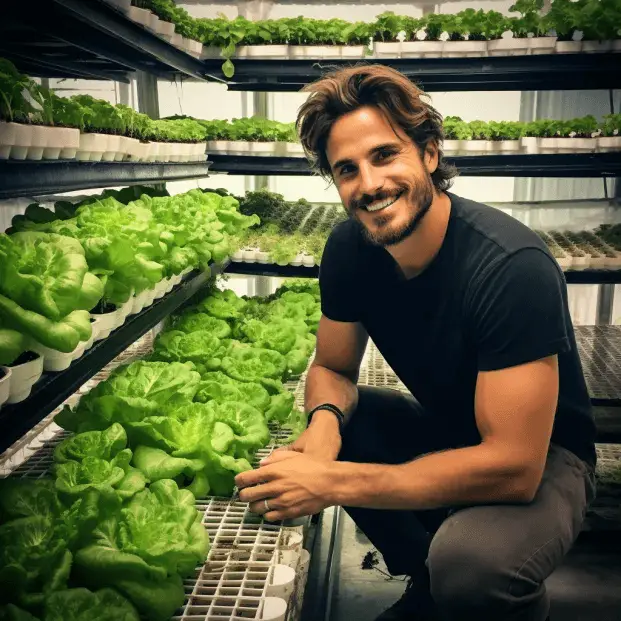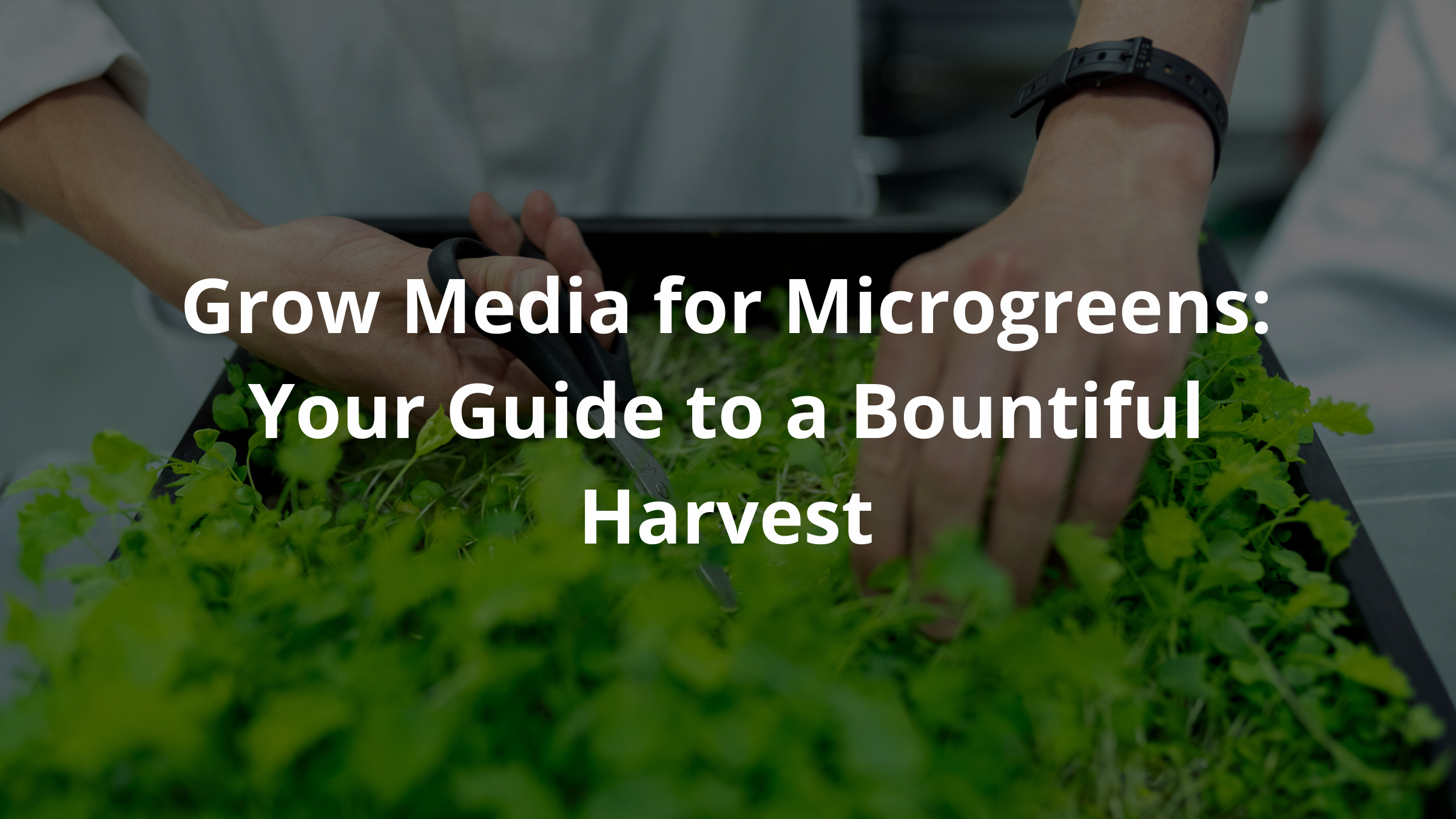Microgreens are tiny plants that pack a big punch of flavor and nutrients. They are like the little siblings of full-grown veggies, sprouting right from seeds.
Choosing the right grow media is very important. It is like picking the best bed for a baby to sleep in. If someone wants to grow microgreens like radish seeds or pea shoots, keep reading to find out how to make them thrive!(1)
Key Takeaway
- Microgreens need the right grow media to grow well.
- There are different options like hemp mats, coconut coir, and potting mixes.
- Keeping seeds moist but not too wet helps prevent root rot.
Types of Growing Media
Credits: CoreysCave
Soil-Based Media
Soil is like a warm hug for plants. It helps them feel cozy and grow strong. Traditional potting soil is great for microgreens because it holds moisture and provides nutrients.
Some popular soil options include:
- ProMix BX: Light and fluffy, perfect for microgreens.
- Sunshine Mix #4: Contains little rocks called perlite for better drainage.
- Black Gold: An easy-to-find organic choice.
Soil is usually cheaper than fancy mats and helps grow greens without extra stuff.
Soilless Media
Soilless media are the cool kids in gardening. They don’t have soil but still help plants grow.
- Coconut Coir: Made from coconut husks, it holds water well and is sustainable.
- Peat Moss: Great for moisture but not as eco-friendly.
- Vermiculite and Perlite: Light materials that improve air and drainage. Vermiculite retains moisture, while perlite helps water move.
If using coconut coir or peat moss, avoid sogginess to prevent root rot!
Mats
Mats are like beds for microgreens. They provide a clean space to grow.
- Hemp Mats: Neat and mess-free, they hold moisture but need checking daily.
- Synthetic Mats: These aren’t as eco-friendly, so hemp mats are a better choice.
Considerations for Choosing a Growing Medium

When picking how to grow microgreens, think about:
- Moisture Retention: It should keep seeds moist but not drown them.
- Nutrient Availability: Some media provide food, others need extra help.
- Sustainability: Organic or sustainable materials make your greens better.
- Cost: Soil-based options are often cheaper.
Tips for Growing Microgreens
Want to be a great microgreen gardener? Here are some helpful tips!
- Use a Spray Bottle: This keeps seeds moist without flooding them.
- Don’t Overwater: Too much water can cause root rot. Always drain excess water.
- Give Them Light: Microgreens love light! Use a grow light or find a sunny spot.
What Seeds to Grow
There are many tasty seed choices!
- Radish Seeds: They grow fast and taste spicy.
- Broccoli Seeds: These are packed with nutrients.
- Pea Shoots: They are sweet and crunchy!
- Wheat Grass: This is great for juicing and very healthy.
Find seed packs at garden stores. They usually have growing instructions. Keep seeds moist to help them sprout!
Common Misconceptions
Some people think you need fancy equipment to grow microgreens. That’s not true! You can use simple things like pots or trays from your kitchen. You don’t need a whole farm or a greenhouse. With some hemp grow mats or coconut coir, anyone can easily grow microgreens right on their kitchen counter.(2)
Another misconception is that all microgreens grow the same way. Different seeds need different care. For example:
- Radish microgreens: These grow fast and sprout quickly.
- Daikon radish sprouts: These take a bit longer to grow.
Keeping an eye on the seeds and adjusting their care makes a big difference. Some seeds like more water, while others prefer less. Not all seeds need the same amount of light either.
Also, many people think that microgreens are hard to grow. In reality, they are pretty simple! With the right care, fresh greens can be ready in just a week or two.
Microgreens are packed with flavor and nutrients. They add a tasty crunch to meals. Plus, growing them at home can save money. Instead of buying expensive greens at the store, anyone can grow their own for a fraction of the cost.
So, don’t worry about needing a big setup or special tools. With a few simple supplies, anyone can grow delicious microgreens. Just remember to pay attention to the needs of each type of seed. Happy growing!
Conclusion
Choosing the right grow media is important for growing delicious microgreens. Whether using soil, soilless media, or mats, each option has its benefits. Keep seeds moist, give them plenty of light, and choose the seeds you love best. Happy growing!
FAQ
What are hemp mats and how do they compare to coconut coir for growing microgreens?
Hemp mats and coconut coir are popular choices for growing microgreens. Hemp mats are made from hemp fiber and are a sustainable option. Coconut coir, on the other hand, is made from coconut husks and holds moisture well. Both can help prevent root rot by keeping seeds moist without too much water. If you’re planting larger seeds like pea shoots or radish seeds, either option can support healthy growth, so it really depends on what you like best.
How can I use microgreen trays with potting mixes for better germination rates?
Using microgreen trays filled with potting mixes can improve germination rates for your microgreen seeds. A good seed starting mix or organic potting soil helps with drainage and keeps moisture in. After planting, use a spray bottle to keep the seeds moist but not soaked. This method works well for darker seeds like broccoli or daikon radish sprouts, which tend to grow better in these conditions.
What is the best way to manage excess water when growing microgreens in soil?
Managing excess water is important when growing microgreens in soil to avoid root rot. Make sure your microgreen trays have drainage holes. Before planting, soak your chosen medium with about a gallon of water. After sowing the seeds, watch the moisture levels closely and use a spray bottle to keep them moist without overwatering. This helps create a healthy environment for your microgreens, like wheat grass or radish microgreens.
How do I ensure my microgreens receive adequate light while using hydroponic methods?
To give your microgreens enough light when using hydroponic methods, consider using artificial lighting if natural light isn’t enough. A grow light can provide the right amount of light for consistent growth. Place your microgreen trays on the kitchen counter or another bright spot and make sure they get 4-8 hours of light each day. This is especially important for slower-growing varieties like pea shoots or if you’re using coconut coir grow mats.
Can I reuse leftover seeds for growing different types of microgreens?
Yes, you can reuse leftover seeds to grow different types of microgreens! Just check their shelf life and germination rates first to make sure they’re still good. If they are, you can mix them with new seed packs for a variety of flavors in your harvest. Just be careful not to mix identical seeds that might compete with each other in the same tray. Store any damp seeds properly to keep them fresh!
What are the benefits of using coconut coir fiber for microgreen production?
Coconut coir fiber is a great choice for microgreen production because it retains moisture well and provides good aeration for the roots. This helps prevent issues like root rot, ensuring that your microgreens grow strong and healthy. Additionally, coconut coir is a sustainable option, making it an eco-friendly choice for gardeners who want to reduce their environmental impact while growing delicious baby greens.
How can I improve germination rates for dark seeds like radish seeds and broccoli seeds?
To improve germination rates for dark seeds like radish seeds and broccoli seeds, start by using a quality seed starting mix or potting mix that retains moisture. Keep the seeds moist using a spray bottle and cover them with a light layer of soil to create a dark environment, which helps with germination. Make sure to provide consistent warmth, as this can speed up the process and lead to healthier microgreens.
What should I do if my microgreens are growing slower than expected?
If your microgreens are growing slower than expected, check several factors. First, ensure they are getting enough light; artificial lighting can help if natural light is limited. Also, monitor the moisture levels; both excess water and dryness can hinder growth. Lastly, consider the temperature—keeping your microgreens in a warm area can promote faster growth. If you’re using hemp mats or coconut options, ensure they are properly maintained for optimal results.
How do I properly store my microgreen seeds to maintain their shelf life?
To maintain the shelf life of your microgreen seeds, store them in a cool, dry place away from direct sunlight. Use airtight containers to protect them from moisture and pests. Label your seed packs with the date of purchase or planting to keep track of their freshness. If you have leftover seeds after planting, make sure they are completely dry before storing them again to prevent mold and ensure better germination rates in the future.
References
- https://homemicrogreens.com/microgreen-growing-mediums-2/
- https://www.bootstrapfarmer.com/blogs/microgreens/microgreens-growing-media?
Related Articles
- https://tophydroponicgarden.com/nutrient-film-technique/
- https://tophydroponicgarden.com/what-plants-can-be-grown-using-aeroponics/
- https://tophydroponicgarden.com/hydroponics-introduction/
Was this helpful?

I’m Barrie L., a passionate hydroponic gardening enthusiast dedicated to cultivating thriving, soil-less gardens. With a focus on all things hydroponic, I share my expertise on innovative growing techniques and sustainable practices through my blog, tophydroponicgarden.com. As a seasoned hydroponics specialist, my goal is to inspire and guide fellow gardeners in harnessing the power of water-based cultivation for bountiful and eco-friendly harvests. I’m also an author of the book “Hydroponics For Absolute Beginners: Your Step By Step Guide For How To Create An Hydroponics System At Home Without Soil, For Growing Vegetable, Fruit And Herbs.” which is sold on Amazon. Join me on a journey of redefining the way we cultivate plants, one nutrient-rich solution at a time. Happy growing!


